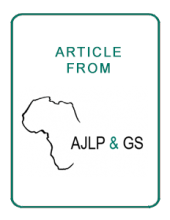/ library resources
Showing items 1 through 9 of 178.Most literature on land tenure in sub-Saharan Africa has presented women as a homogenous group. This study uses evidence from Ghana, Nigeria, and Zimbabwe to show that women have differentiated problems, needs, and statuses in their quest for land access and tenure security.
Water- and land-related resource conflicts are the starting point of the Zambian nexus study. Zambia is endowed with abundant land and water resources, the utilisation of which offers huge potential for the country’s economic development.
This booklet reveals that women only got 103,043 titles representing 10.3 percent, while men got 865,095 titles representing 86.5 percent of the total. The glaring disparity is made clear when looked at against the actual land sizes and titled for women against men.
The agricultural development on newly reclaimed lands has led to many national debates about food
security and budget deficits, and the living conditions of the new settlers at the local level. This debate
In response to the severe economic, social, and environmental costs of degradation across Tunisia’s rangelands, the International Center for Agricultural Research in the Dry Areas (ICARDA) has worked with the General Directorate of Forestry (Direction Générale des Forêts, DGF) to draw up a new pa
The political dysfunction that had come to characterize an imploding Zimbabwean economy is beyond dispute.
A functioning land administration sector is the foundation for economic growth. Unfortunately, effective land registry and cadastral systems with national coverage exist in only a fraction of the world’s countries.
In Northern Africa region, land administration and land management systems are characterized by the existence of various institutions and a diversity of land tenures.
Community land and natural resources lie at the heart of social, political and economic life in much of rural Africa.
Pagination
Land Library Search
Through our robust search engine, you can search for any item of the over 73,000 highly curated resources in the Land Library.
If you would like to find an overview of what is possible, feel free to peruse the Search Guide.





